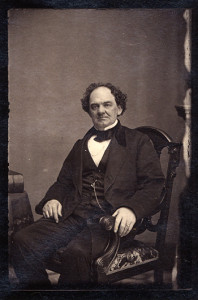Here is a mark of honor: Donald Trump has surpassed P.T. Barnum as the all-time American huckster. His sleight of hand was masterful in capturing major media attention Thursday evening after declaring he would not participate in a Fox News debate for Republican presidential candidates.
To his dishonor, Trump used his Iowa sideshow to his political advantage by cooking up a telethon for veterans causes, although there are vets who say the event was a con. Trump said he raised almost $7 million which will be distributed among a number of veterans organizations. Several of these groups I recognize but others I don’t — not to say anything is amiss with these organizations.

As a veteran, I have and still do champion veterans and legitimate vet organizations. But I am not alone in feeling that his stunt did little more than use veterans as a prop.
While there are only early ratings numbers — and the first primary vote has yet to be cast for the November General Election — Trump is a shoo-in to surpass the long-gone Barnum as the All-Time World Champion con man.
Phineas Taylor (P.T.) Barnum was a celebrated 19th century showman who founded the Barnum and Bailey Circus. He was likewise known for sideshows with “freaks” and coining the phrase “There’s a sucker born every minute.” Like Trump, Barnum also dabbled in politics as a Connecticut legislator and mayor of Bridgeport, Conn.

Also like Trump, Barnum was a human contradiction. PT vigorously denounced slavery although he was the founding father of the black-face minstrel show. And although he used that form of entertainment for financial gain, the shows were often satire of the white men who felt superior to blacks.
Barnum also sponsored legislation that had a long-lasting effect, with that law’s judicial abolition leading to the “Sexual Revolution.”
The Connecticut General Assembly passed the law Barnum sponsored in 1879 which led to the ban on means of preventing conception. That state’s laws were among the most severe anti-birth control measures. It was only in 1965 in Griswold v. Connecticut that the law was overturned. Even beyond a change in the nature of American sexuality, the case also concluded that certain articles of the Constitutional Amendments established the right to privacy.
Trump might have been an equal, or perhaps better, than Barnum had The Donald lived in the 19th century. Of course, Trump came up in a time — aided by his financial gain by birth — when media is faster and more (world)widespread. Were Trump just another of Sam Walton’s rich offspring his effect on society might be barely noticed. That might be true to a lesser degree even if Trump was a Bill Gates or Warren Buffett.
But Donald J. Trump is The Donald. He’s had his ups and downs but at least says he is the one on top. He created big worlds and married world-class beauties. And to top it off, he became a TV star in his “reality” series, “The Apprentice.”
Will Trump become president is the multi-billion-dollar question. Early on after his initial announcement, I thought “no way.” I still feel that way but the older I get the more the “way” outweighs the “no way.”
I think if people who support Trump realizes how he would walk over his mother to get his way — though he might shed a tear doing it– perhaps they would understand how similar PT and The Donald were.
Donald Trump isn’t the first presidential candidate, nor if elected, president, to use the military and veterans as props. It is certainly beyond distasteful to me as well as other veterans. But hey, it’s “The Greatest Show on Earth.”

